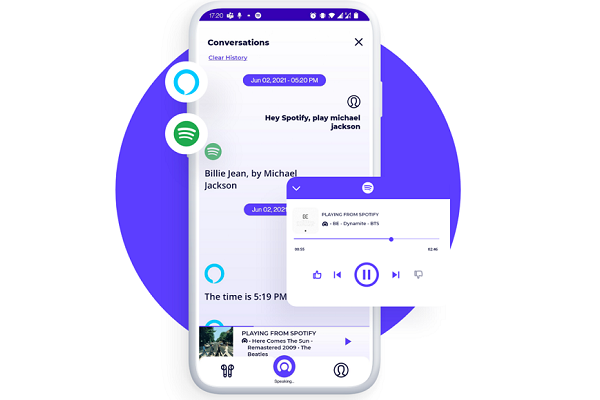Native Voice Raises $14M to Expand Voice Services Ecosystem
 Voice services provider Native Voice has closed a $14 million seed funding round led by Gutbrain Ventures, PBJ Capital, and Signal Peak Ventures. Native Voice provides on-demand access to branded voice assistants without requiring the usual intermediaries of Alexa, Siri, or Google Assistant.
Voice services provider Native Voice has closed a $14 million seed funding round led by Gutbrain Ventures, PBJ Capital, and Signal Peak Ventures. Native Voice provides on-demand access to branded voice assistants without requiring the usual intermediaries of Alexa, Siri, or Google Assistant.
Branded Access
Native Voice streamlines how users pull up apps and services by cutting out the need to ask a native voice assistant or even tap on a mobile app. For instance, a user could start up a Spotify playlist by saying “Hey Spotify,” then get open Uber to get a ride by saying “Hey Uber,” all without needing to tap on the device or ask a voice assistant to handle it. The library of brands includes the standard phone voice assistants, so you can ask Siri, Alexa, or Google Assistant questions. The idea is to shorten the process of asking one voice assistant to open an app and operate it or needing to tap on a screen if a voice assistant lacks certain capabilities within the app you want to use.
“Brands like Bank of America and Spotify are investing tens of millions of dollars in building their own voice service (hey Erica and hey Spotify), but it is hard for them to get onto the 400+ audio device brands out there,” Native Voice founder and CEO John Goscha told Voicebot in an interview. “We want to scale our company to offer instant, touchless access across every brand in every vertical. Voice is not just for music, news, podcasts, radio, weather, fitness, and meditation anymore.”
Funding Libraries
Native Voice aims to work with essentially any device with microphones and speakers, including smart speakers and displays, mobile phones, wearables like earbuds, and inside cars. The company is looking to incorporate every major brand coming out with voice services, including Starbucks as well as the aforementioned Uber and Spotify. Being able to use all of the various voice services of multiples companies without switching accounts or navigating a touchscreen is likely to appeal to users and thus to the brands it is working with, which include several unannounced fitness, tech, and retail brands.
“The new money is to propel the company onto more devices, expand our growing library of voice services and prove and scale our business model,” Goscha said. “These investments are helping our team build the platform to give our users what they want from all brands and in turn help those brands without a voice service understand why voice is core to the future growth of their business.”
Follow @voicebotai Follow @erichschwartz
Linux Foundation Launches Open Voice Network to Set Voice Tech Standards
Nvidia Invests $1.5M in Mozilla Common Voice Open-Source Project
Facebook, Xiaomi Join Amazon’s Voice Interoperability Initiative, Google and Apple Still Holding Out








